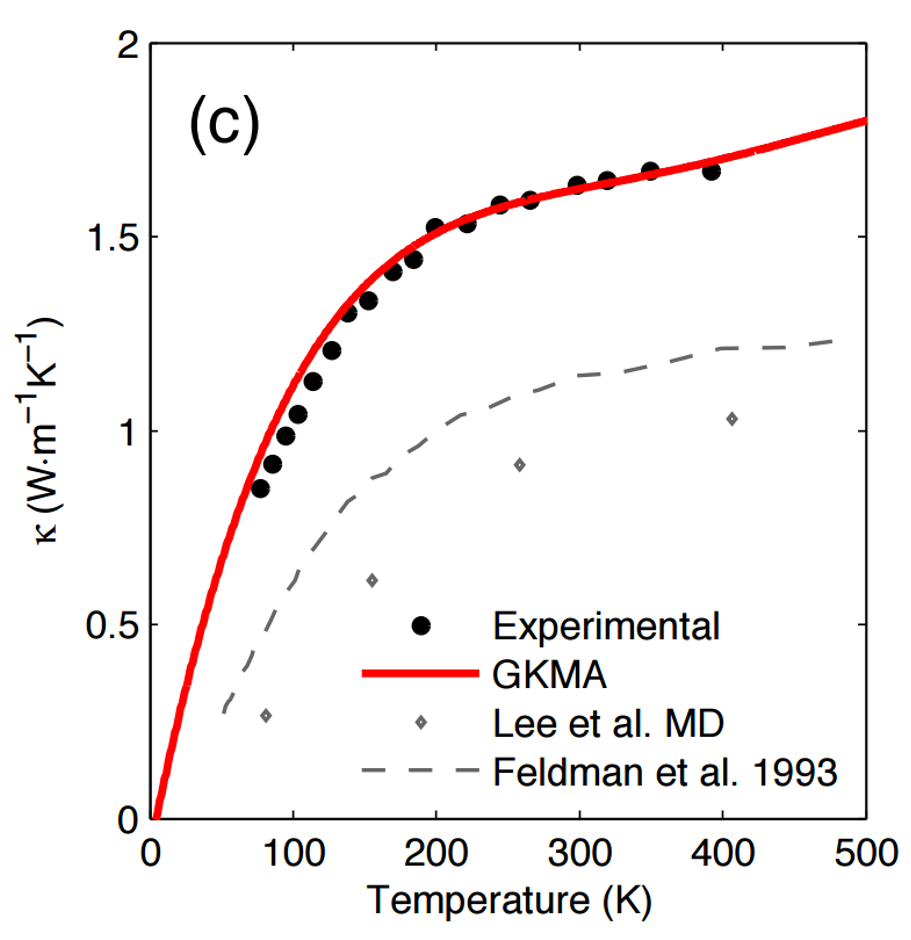Direct Calculation of Modal Contributions to Thermal Conductivity via Green-Kubo Modal Analysis: Crystalline and Amorphous Silicon


Abstract

In this letter we derive a new method for direct calculation of the modal contributions to thermal conductivity, which is termed Green-Kubo modal analysis (GKMA). The GKMA method combines the lattice dynamics formalism with the Green-Kubo formula for thermal conductivity, such that the thermal conductivity becomes a direct summation of modal contributions, where one need not define the phonon velocity. As a result the GKMA method can be applied to any material/group of atoms where the atoms vibrate around stable equilibrium positions, which includes not only crystalline line compounds, but also random alloys, amorphous materials and even molecules. By using molecular dynamics simulations to obtain the time history of each mode’s contribution to the heat current, one naturally includes anharmonicity to full order and can obtain insight into the interactions between different modes through the cross-correlations. As an example, we applied the GMKA method to crystalline and amorphous silicon and because the modal contributions at each frequency result from the analysis, one can then apply a quantum correction to the mode heat capacity to predict the thermal conductivity at essentially any temperature. The temperature dependent thermal conductivity for amorphous silicon, computed using quantum corrected GKMA results, shows the best agreement with experiment to date and serves as a validation of the formalism. The GKMA method provides new insight into the nature of phonon transport, as it casts the problem in terms of modemode correlation instead of scattering, and provides a general unified formalism that can be used to understand phonon-phonon interactions in essentially any class of materials or structures where the atoms vibrate around stable equilibrium sites.
